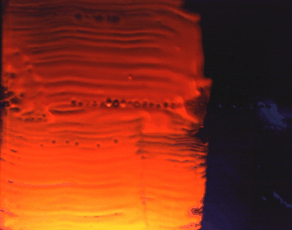The UTSA Mach 7 Ludwieg Tube

The University of Texas at San Antonio has recently completed a hypersonic Ludwieg tube facility with a nominal operating Mach number of 7.
A Ludwieg tube consists of a long section of pressurized pipe (the driver tube) which exhausts through a nozzle and into a vacuum reservoir—creating hypersonic flow in the test section. This specific Ludwieg tube is an impulse facility which is characterized by a rapid release of energy and short windows of test time. Research in impulse facilities exploits leading-edge optical instrumentation and fast-response transducers to capture more than enough information about the high-speed flow during the short run time of the facility.
For the Mach 7 facility at UTSA, a 2”-long target field of view experiences over 1600 flow-lengths of hypersonic flow during a single test, sufficient for steady-state assumptions to be made. The facility has an 8” × 8” test section and the driver tube can be pressurized using either compressed gas bottles or a four-stage compressor—depending on the desired gas composition—providing stagnation pressures up to approximately 2000 psi. While the primary test gas is generally air, it is also possible to test with nitrogen or other more exotic test gases. The use of non-air test gases makes it possible to test in simulated extraterrestrial atmospheres depending on the needs of a given experimental campaign. Individual test runs have a steady-state duration of roughly 65-100ms with freestream Reynolds numbers between 3× 106 ft-1 – 60 × 106 ft-1.
We are always interested in pursuing collaborative opportunities. If you have ideas regarding the UTSA Hypersonic Ludwieg Tube or would like to learn more about the facility please contact Dr. Combs for more details.
Facility Specifications
| Mach Number | 7.2 |
| Test Section | 8″ x 8″ |
| Pressure | 50-2000 psia |
| Temperature | 800°F / 700 K |
| Unit Reynolds Number | 3-60 × 106 ft-1 |
| Steady-State Test Time | 65-100 ms |
| Total Test Time | up to 500 ms |







